MSI H310M Gaming Plus Motherboard Review: Affordable Basics
Why you can trust Tom's Hardware
Benchmark and Final Analysis
All standard benchmarks and power tests are performed using the CPU’s stock frequencies, with all of its power-saving features enabled. We use the XMP settings in general, as most will do so and not tweak manually. Since XMP is an Intel feature, not all boards will read it properly and may set different timings. But most people will likely set DOCP/XMP and forget it, so that’s the way we test.
Synthetic Benchmarks
Synthetics are a great tool to figure out if a board is running out of spec, as identical settings should produce extremely similar performance results. Advanced memory timings are the one place where motherboard makers can still optimize for either stability or performance though, and those settings also impact Sandra’s bandwidth-intensive Cryptography tests.
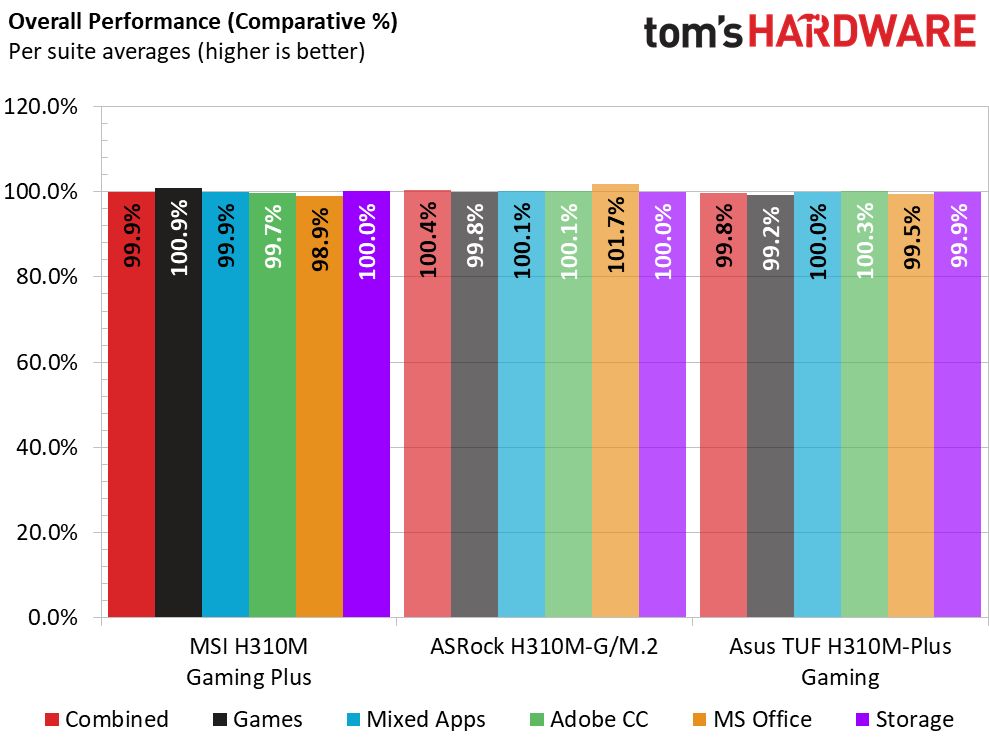


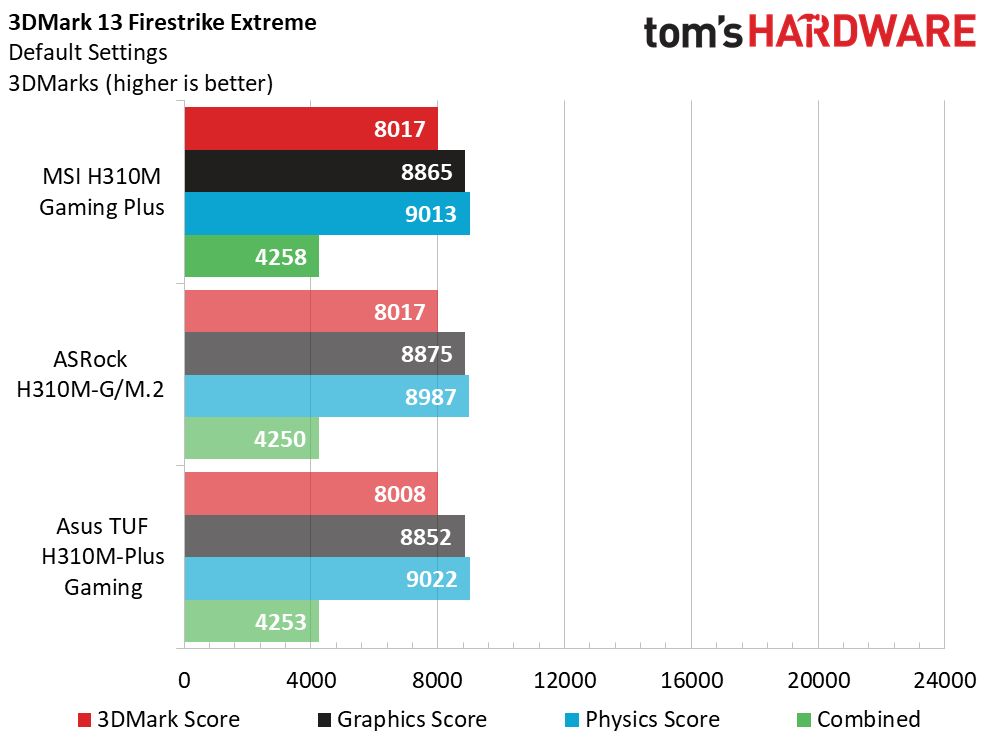






In our synthetic set of tests, the MSI H310M Gaming Plus performed well, trading blows with the other two H310M motherboards. All results were within general run variance difference, with no anomalous results. This tells us all of the boards ran the same clocks and didn’t throttle in our testing (this CPU does not have boost so there can’t be a difference due to any multi-core enhancement from the BIOS).
3D Games
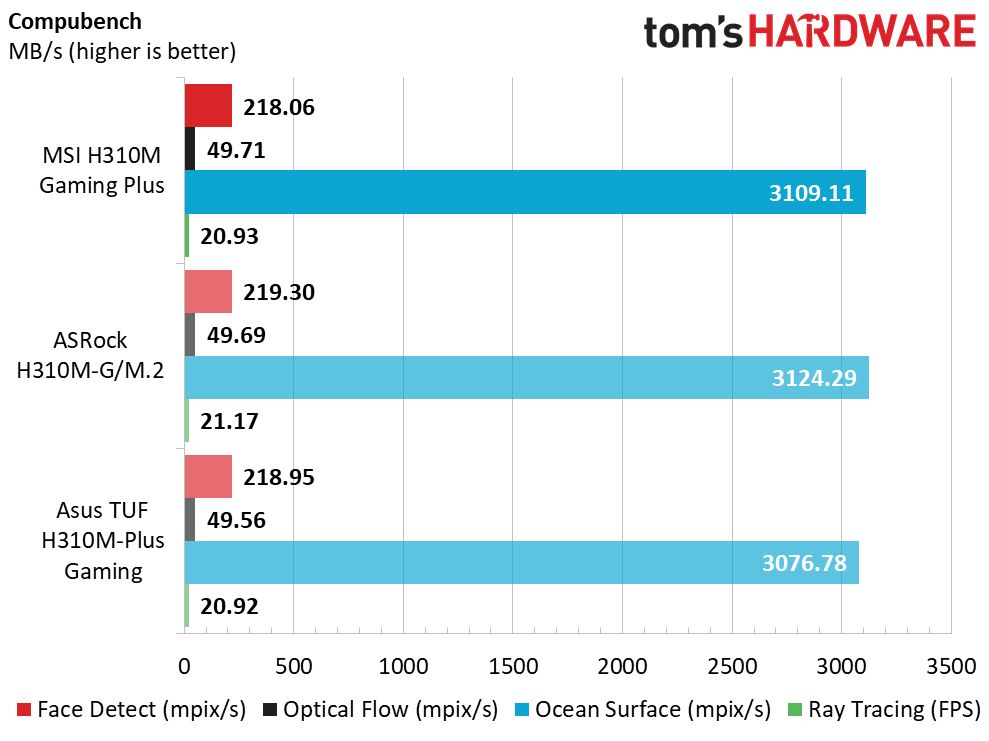
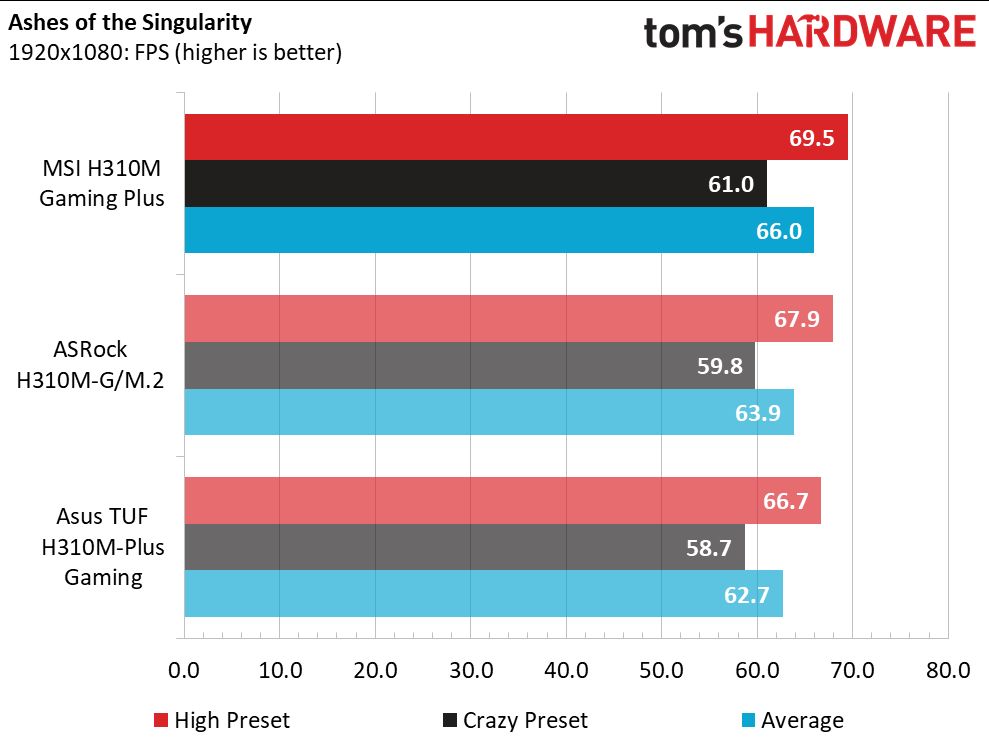
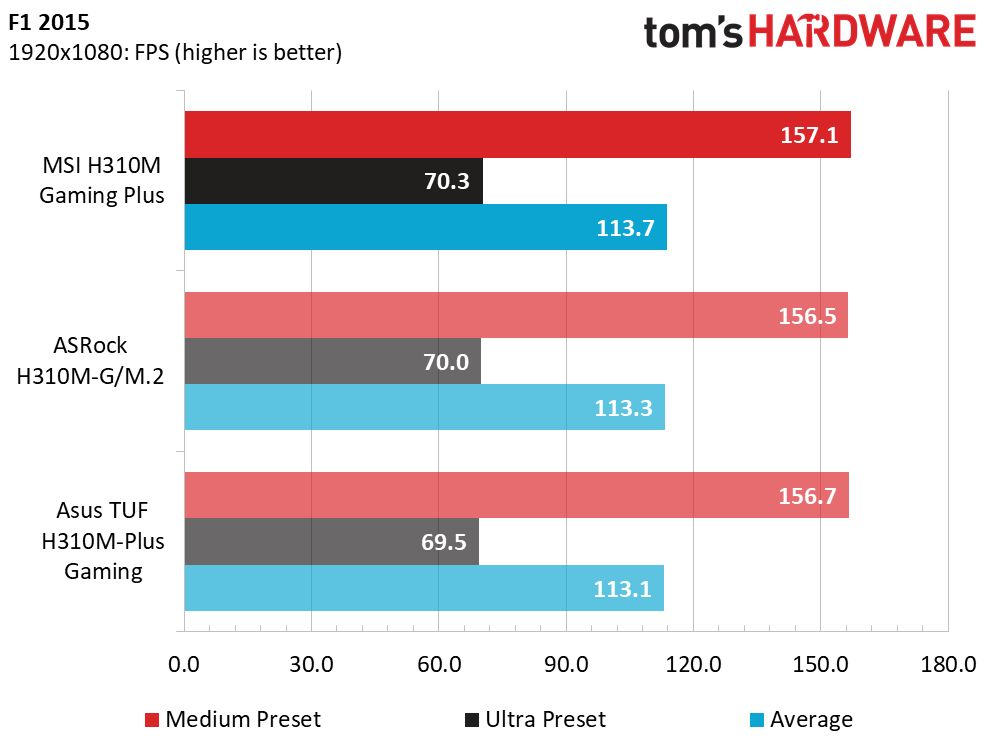

Taking a quick look at our gaming results, here we also see fairly consistent results among the three boards tested. The MSI board did manage to run almost two FPS faster (~3%) in Ashes of the Singularity, otherwise there was no appreciable difference.
Timed Applications

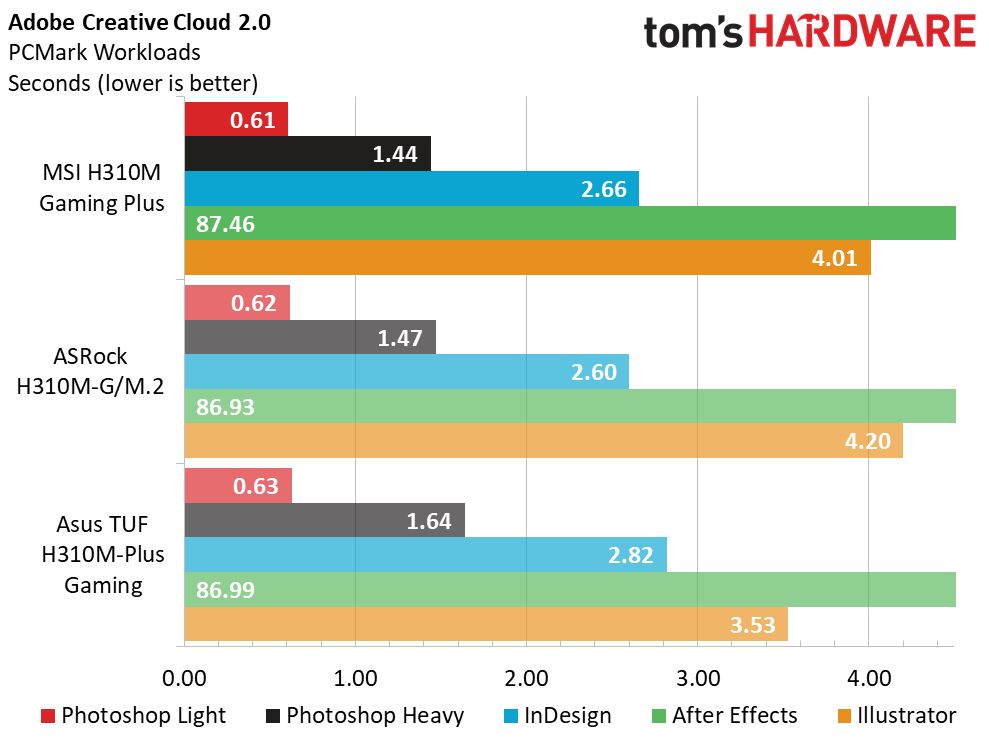

In our timed applications, we don’t see any major differences between our tested systems.
Overall Performance
Looking at our overall performance results, they are all within 1%, outside of the Microsoft office result on the ASrock board, which managed to be 1.7% faster than the other two boards overall. Still, that’s a negligible difference considering the time frames for this testing.
Power Consumption
Power consumption results showed little disparity across the board. The idle results are within 2W of each other, with the MSI using 39W idle and 117W at load, within 3W of the ASUS board, which uses the least power at 114W.
Get Tom's Hardware's best news and in-depth reviews, straight to your inbox.
Final Thoughts
The MSI H310M Gaming Plus is a competent board at the $75 price point, when comparing it to the other boards we gathered data on. The features are there and the price is right. MSI’s board offers similar features to the ASRock H310M-G/M.2 board we reviewed earlier, but at a lower price. Remember, all of the tested boards include four SATA ports, a single M.2 slot, USB 3.1 Gen 1 ports and single full-length PCIe express slot, which covers the basics.
For the most part, the difference between these is how they look, plus on-board headers (fans, USB). Comparing the two boards which cost the same, the MSI and Asus TUF H310M-Plus, both offer two fan headers and the same USB port count and type. So it is really a toss up. To that end, the odd man out here with the boards we tested is going to be the ASRock simply due to price as what it may have over these two isn’t worth the price.
The M310M Gaming Plus itself is a good option to start a Micro-ATX budget build as it has all the basics and the features you should expect at the price point. About the only thing missing, which is missing from all of the boards, is USB 3.1 Gen 2 (10 Gbps) support and perhaps Wi-Fi capability. If needed, both can be added via add in cards (or via USB for Wi-Fi). But overall, the MSI H310M Gaming Plus is a capable board with a price that’s easy to get behind.
Image Credits: Tom's Hardware
MORE: Best Motherboards
MORE: How To Choose A Motherboard
MORE: All Motherboard Content

Joe Shields is a staff writer at Tom’s Hardware. He reviews motherboards and PC components.
-
helpstar Hi there, just had a look at the review´s specification.Reply
The form factor is not ATX, it´s micro-ATX
legacy port is missing: PS/2 Combo Port as well as supported CPU generations of Intel
In the RAM section, it would be nice to write in there, that this board will only use 2666MHz, no matter if better clocked RAM is installed
What I missed in the review: the audio chip will work in 7.1 HD sound, if the front audio is used in combination with the rear ports
Other than that, thanks for the nice review -
rsquared "for those on a tight build budget who don’t not plan on overclocking " ... What, "don't not"?? So who DO plan on overclocking?Reply -
TJ Hooker I wish people wouldn't refer to total # of phases as a single number, i.e. "7-phase VRM" in this article. If you're going to list a single number it should be the # of phases for the CPU core IMO, otherwise list it as Core+Uncore (or Core+Uncore+Memory). This board appears to be 4+2+1.Reply -
NightHawkRMX Yea, agree there.Reply
Reminds me of the people selling "10 core gaming pcs" but in reality it has 4 bulldozer cpu cores and 6 radeon cores.

